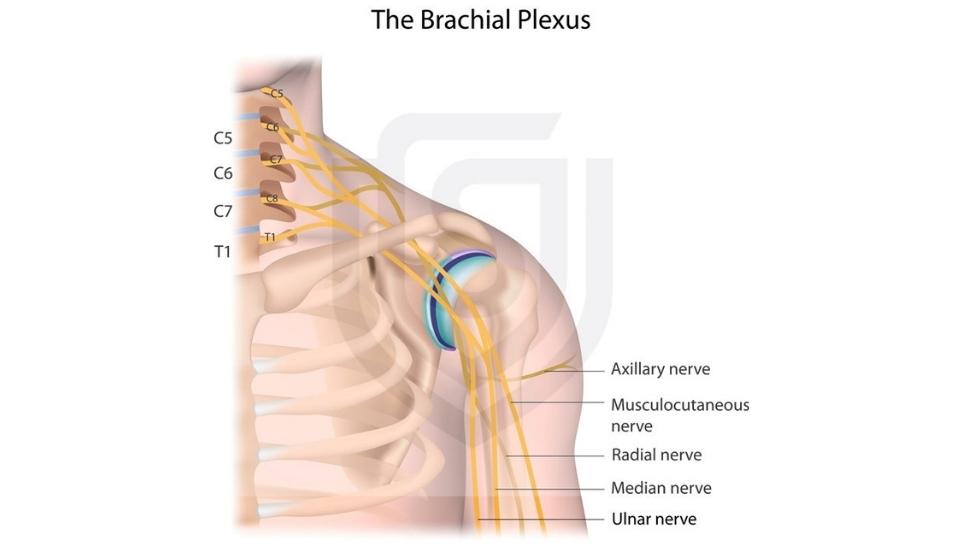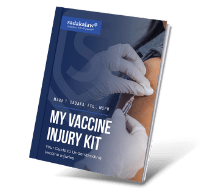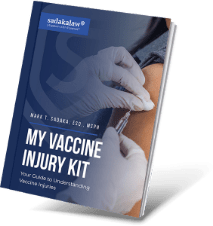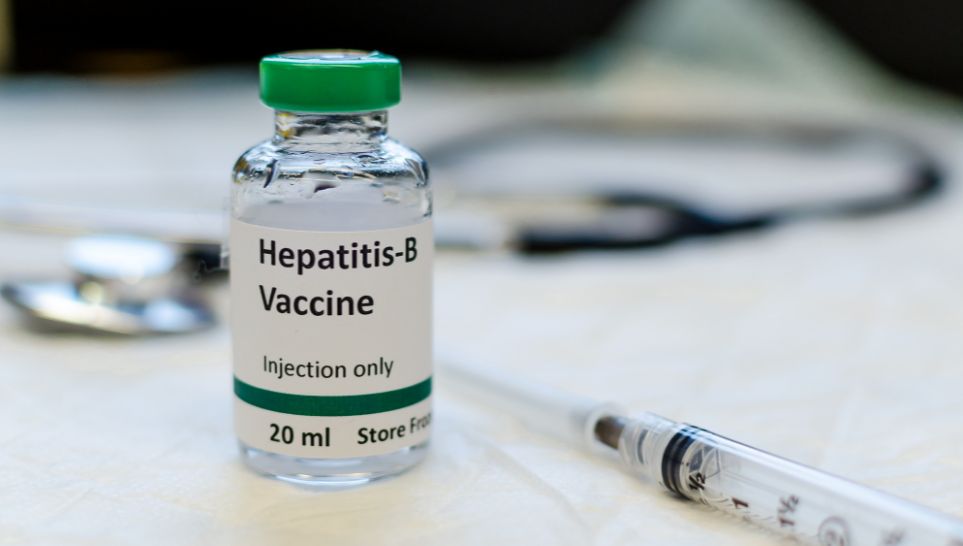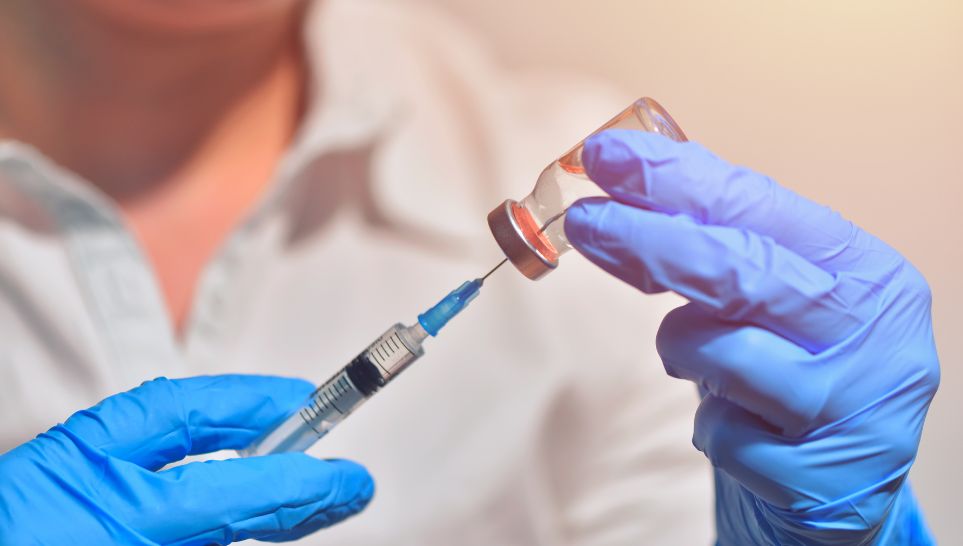While most flu vaccinations do not result in any damage to the patient, the vaccine is not without risk.

By far the most common flu shot-related injury is shoulder damage related to the actual injection. This can cause shoulder and neck pain after flu shot. This type of vaccine injury is called SIRVA or Shoulder Injury as a Result of Vaccine Administration. However, the flu shot can cause serious nerve injuries causing paralysis or death.
The most common type of nerve damage from the flu shot is Guillain-Barré syndrome (GBS). GBS is a rare but serious condition in which the body’s immune system attacks the nervous system, causing weakness and paralysis. Other types of vaccine injury-related nerve damage linked to the flu shot include transverse myelitis (TM) and impact-related nerve damage. TM is a rare neurological condition that results in inflammation of the spinal cord. Impact-related nerve damage causes loss of sensation and pain.
Other complications may result in an injury that affects the nervous system. Patients may be able to recover from these nerve injuries after a regimen of physical therapy. In the interim, however, nerve damage from flu vaccinations can drastically impact the patient’s quality of life and ability to complete their daily activities.
Here is a list of 4 potential types of nerve damage that can result from the flu vaccine:
Brachial Neuritis or Parsonage-Turner Syndrome
This illness primarily affects the nerves in the arm and hand. It will generally impact one side of the body, although in rare cases, it can impact both sides. Brachial neuritis is caused when there is damage to the nerves that carry messages from the spinal cord to the arms and hands.
The progression of brachial neuritis is the opposite of other neurological conditions that result from vaccinations. Here, patients will start with severe shoulder pain, which is then followed by weakness. The weakness then extends down the arm and into the hand. The arm will feel numb and tingly, and the patient may have difficulty moving it. In extreme cases, brachial neuritis can lead to paralysis of the affected arm.
Patients with brachial neuritis generally recover within 6 to 12 months. However, some patients may experience long-term nerve damage, which can cause chronic pain. Treatment for brachial neuritis focuses on managing the pain and helping the patient regain function in the affected arm. Physical therapy is often recommended to help stretch and strengthen the muscles in the arm. In some cases, surgery may be necessary to relieve pressure on the nerves.
While PTS can be treated, the symptoms will generally linger. It takes several months to several years for patients to make a recovery from PTS. Generally, the treatment for PTS will involve some sort of combination of steroids and physical therapy. If these are not effective, then surgery may be necessary.
Learn more about Brachial Neuritis
Return to the Top
Guillain-Barre Syndrome
Guillain Barre Syndrome is a rare but serious complication of flu vaccination. This illness usually occurs in the wake of an infection in the body. The immune system will work to fight off the infection. However, in the process, the immune system will also turn against the nervous system and damage the body’s nerves. There is no single theory as to why the flu vaccine can increase the risk for GBS, but the vaccination does introduce strains of infection into the body.
GBS varies in its severity. The disease can lead to a loss of feeling and movement in extremities. Since the nervous system is at issue, there can also be a loss of reflexes, and some patients report incontinence. In a more severe manifestation of GBS, the patient’s respiratory function may be affected, which can lead to death.
There have been several documented fatalities from GBS in patients who have received a flu vaccination. Rates of GBS will vary each year, depending on the content of that year’s flu vaccine. While the connection between receiving a flu vaccine and developing GBS is not certain, there is at least some interrelation between the two. Some who suffer from GBS may never fully recover, while others can mostly recover with physical therapy.
Learn more about Guillain-Barre Syndrome
Return to the Top
Shoulder Nerve Damage and Impact Related Nerve Damage
Can a shot hit a nerve? Flu shots can cause damage to the axillary, radial, ulnar, and median nerves.
Sometimes, an error in the method of injection can damage the nerves in the shoulder. Like SIRVA, when the injection is given to the wrong part of the shoulder, it can have adverse effects that result in a loss of motion in the shoulder. Patients will feel a tingling and weakness in the shoulder that will progress to sharp pain.
This type of nerve damage will also result from the injection being administered too high on the shoulder. In one case of axillary nerve damage, a man received a vaccination at a drive-through clinic. Within days, he began to experience weakness in his shoulder that degenerated over time. After five weeks, it was discovered that his deltoid muscle had atrophied.
Patients will generally require physical therapy to regain the full use of their shoulders. Patients who do not respond to physical therapy may need surgery to correct the problem. Many patients will regain most or all of the use of their shoulder, although some may have permanent symptoms.
What is axillary nerve damage?
The axillary nerve is a nerve that runs through the shoulder. It controls the muscles in the shoulder and allows for sensation in the upper arm. Axillary nerve damage can occur as a result of an injury or surgery to the shoulder, or it can be caused by compression or inflammation of the nerve. Symptoms of axillary nerve damage include weakness in the muscles controlled by the nerve, loss of sensation in the upper arm, and pain in the shoulder.
What is radial nerve damage?
The radial nerve is a nerve that runs down the arm. It controls the muscles in the hand and allows for sensation in the fingers. Radial nerve damage can occur as a result of an injury or surgery to the arm, or it can be caused by compression or inflammation of the nerve. Symptoms of radial nerve damage include weakness in the muscles controlled by the nerve, loss of sensation in the fingers, and pain in the arm.
What is ulnar nerve damage?
The ulnar nerve is a nerve that runs down the arm. It controls the muscles in the hand and allows for sensation in the fingers. Ulnar nerve damage can occur as a result of an injury or surgery to the arm, or it can be caused by compression or inflammation of the nerve. Symptoms of ulnar nerve damage include weakness in the muscles controlled by the nerve, loss of sensation in the fingers, and pain in the arm.
What is median nerve damage?
The median nerve is a nerve that runs down the arm. It controls the muscles in the hand and allows for sensation in the fingers. Median nerve damage can occur as a result of an injury or surgery to the arm, or it can be caused by compression or inflammation of the nerve. Symptoms of median nerve damage include weakness in the muscles controlled by the nerve, loss of sensation in the fingers, and pain in the arm.
Read more about Shoulder Injuries After Vaccination
Return to the Top
Transverse Myelitis
This is a serious side effect of a flu vaccination where part of the spinal cord becomes inflamed causing severe pain and disability.
The inflammation of the spinal cord damages the nerve cell’s insulation called myelin, interrupting the ability of the spinal cord to send messages throughout the body. As with anything that impacts the spine, there is the possibility of lasting damage, including the loss of the use of hands, arms, legs, and/or feet.
The symptoms of transverse myelitis can come on suddenly after the influenza vaccine or develop over a few days after the vaccine. Symptoms may include:
• Back pain or stiffness
• Numbness or weakness in the legs
• Loss of bowel or bladder control
• Difficulty walking or moving the legs
• Sexual dysfunction
• Pain in the trunk or back
Most often, transverse myelitis will impact the legs or feet. In a more severe case of transverse myelitis, the patient will experience a complete loss of the use of arms and legs or complete paralysis.
There will also be neuropathic pain, abnormal sensations, and possible incontinence. In the most severe cases, the patient will need emergency surgery when they experience compression of the spinal cord.
While transverse myelitis is a rare vaccine injury, there are roughly one to two cases for every million vaccinations. Given the number of flu vaccinations in the United States every year, there may be several hundred additional cases of transverse myelitis that result from this vaccination.
Learn more about Transverse Myelitis
Return to the Top
When you have experienced any one of these complications as a result of flu vaccination, you must consult with an attorney to find out if you may be eligible for compensation. The attorneys at Sadaka Law are well versed in these cases and can advise you on the specifics of the Vaccine Injury Compensation Program. Our attorneys can guide you through the process of filing a claim for your injuries.
What is the National Vaccine Injury Compensation Program?
The National Vaccine Injury Compensation Program is a no-fault program that was created to provide compensation to those who have been injured by a vaccine. The program is administered by the U.S. Department of Health and Human Services and is funded by a tax on vaccines. The program covers injuries caused by vaccines that are recommended by the Centers for Disease Control and Prevention (CDC) for routine administration to children, adolescents, and adults.
Learn more about VICP program
Do flu shots hurt?
The most common side effect of the flu shot is an injection site reaction, soreness, or redness at the injection site. Some people may also experience a low-grade fever, headache, or muscle aches. You may want to ask your doctor or nurse if you can have it done in your non-dominant arm. That way, if you do feel any discomfort, it will be in the arm that is less used for everyday activities.
How are flu shots administered?
Flu shots are usually given as an injection (shot) in the upper arm into the muscle or intramuscular injection. They can also be given as a jet injector, which is a needle-free device that uses high pressure to push the vaccine through your skin into the muscle.
Can vaccines cause other nerve injuries?
YES. Vaccines can cause Bell’s palsy and other nerve injuries.
